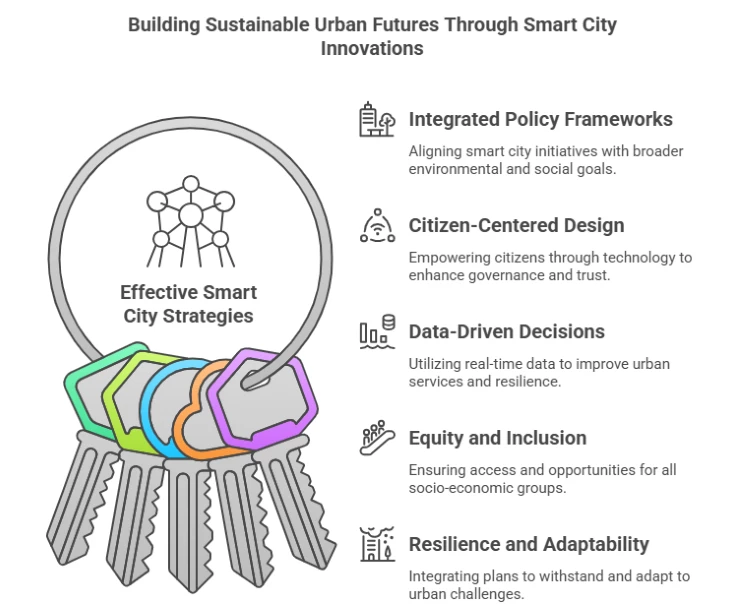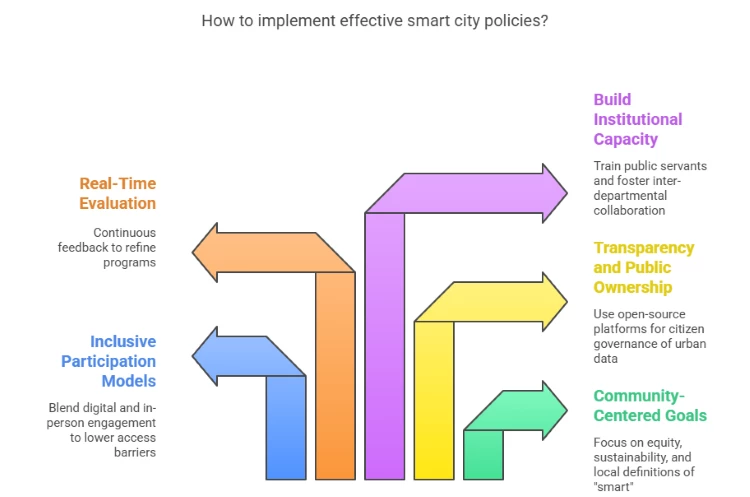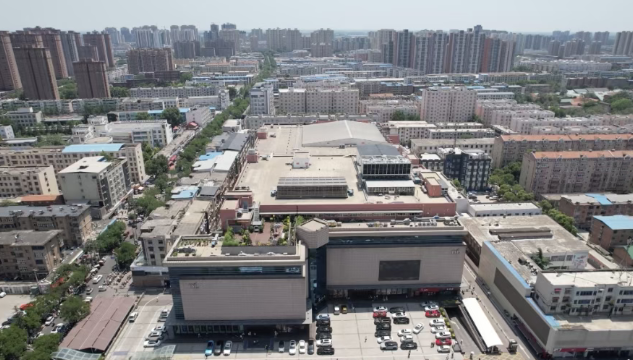Cities across the globe face urgent challenges—climate change, resource depletion, inequality, and explosive urban growth. In response, many have embraced the smart city model: a flexible framework that combines digital innovation, data, and citizen input to manage complexity and drive sustainability. But what are the best smart city policies for urban sustainability?
There’s no universal playbook. Yet cities that prioritize context, people, and adaptability are showing the way forward.
Context matters: one size doesn’t fit all
Effective urban sustainability policies start with understanding local realities. What works in Amsterdam might not suit Accra. Political systems, civic culture, economic capacity, and existing infrastructure all shape what’s possible.
Singapore thrives on centralized planning and long-term investment, while Barcelona leans on civic tech and grassroots action. Both see results—but follow distinct paths. These examples underscore an important truth: there are no perfect models. Flexible, context-aware policies outperform rigid models. The best smart city policies for urban sustainability evolve through experimentation, feedback, and a willingness to adapt.
Core elements of successful smart city strategy for sustainability
Despite local differences, thriving smart city strategy share key ingredients:
1. Integrated policy frameworks. Smart tools must align with broader goals. For example, Amsterdam’s Smart City strategy ties into its Circular Economy Agenda, blending innovation with environmental care.
2. Citizen-centered design. Technology should empower people. For instance, Madrid’s Decide Madrid lets residents vote on policies, building trust and democratic ownership.
3. Data with purpose. Data should be used to improve city functioning and quality of life. For example, Seoul uses real-time data to ease congestion and cut emissions. Its Smart Transportation System boosts service quality and resilience.
4. Equity and inclusion. Smart strategy should provide social inclusion. For instance, Medellín’s cable cars connect poor neighborhoods to the city center, proving smart policy can drive social progress.
5. Resilience and flexibility. For example, New York’s OneNYC plan integrates housing, climate, and infrastructure—future-proofing the city against crises.
6. Cross-sector collaboration. For instance, Helsinki’s Whim Mobility-as-a-Service emerged from partnerships between government, startups, and private firms, showing how collaboration unlocks innovation.

Best smart city policies for urban sustainability in action
In reality, no policy is ever perfect. However, the following two examples show how a policy can adopt key features of the best smart city policies for urban sustainability.
Participatory budgeting in Paris
Since 2014, Paris has allocated €100 million yearly—5% of its budget—for citizen-proposed projects. Participation grew from 40,000 voters to over 142,122 by 2022. Parisians could vote online and offline.
Yet not all went smoothly. Participation still hovered around 10%, and some projects lacked impact or alignment with city goals. Critics also questioned costs. In response, Paris reformed the system—tightening proposal requirements, reducing the PB budget to 3.5%, and limiting voting to “citizen card” holders.
Despite its imperfections, Paris’ evolving model offers vital lessons. Hundreds of projects are still approved each cycle, often targeting underserved communities. The initiative has fostered interdepartmental collaboration, strengthened grassroots partnerships, and improved City Hall’s ability to coordinate citizen-led initiatives. The best smart city policies for urban sustainability are not static—they evolve through trial, critique, and course correction.
Technopolitics in Barcelona: Decidim
Barcelona offers another standout model. Rather than starting with new technologies, the city focused on real-life problems—pollution, housing, mobility—and used existing tools to address them. Its open-source platform, Decidim, enables citizens to propose, debate, and track public policy. As of 2023, over 120,000 users have engaged in more than 120 processes, leading to the adoption of 14,425 policy proposals.
Launched by the progressive Barcelona en Comú administration (2015–2019), Decidim now serves civic groups, cooperatives, and activist networks—extending democratic processes beyond City Hall. More than software, it represents a “technopolitical” shift: governance as co-creation, infrastructure as shared commons, and digital platforms as engines of civic agency.
Decidim’s transparent, adaptable architecture shows how the best smart city policies for urban sustainability can deepen democracy—not just efficiency.
Risks and blind spots
Smart city projects carry significant risks, especially when implemented without sufficient safeguards or critical reflection. Some of the most pressing concerns include:
- Digital Inequality
Platforms like Decidim assume digital access, but many still lack skills or access.
- Technocratic Overreach
Over-reliance on data and algorithms can alienate citizens and obscure important human values. Several global pilots have seen trust erode as residents felt increasingly governed by machines rather than people.
- Surveillance and Political Control
Without clear governance, smart technologies can become tools for authoritarian control. In some countries, including China, governments use facial recognition, big data, and social credit systems to monitor and influence citizen behavior—raising serious concerns about civil liberties.
- Performative Participation
When governments use participatory tools as window dressing rather than genuine decision-making, citizens lose trust. “Smart” becomes branding, not substance.
Key recommendations for policymakers
From the successes and pitfalls of cities, several practical recommendations emerge.

Conclusion: smart and sustainable cities are built, not bought
There is no single best smart city policy for urban sustainability. They are about learning, adapting, and innovating in place. Success depends on local realities, political leadership, and the willingness to evolve.
The most promising policies are those grounded in people, not just platforms. They balance innovation with inclusion, strategy with flexibility, and data with democratic values. Urban sustainability is not a destination but an ongoing negotiation—between government and citizens, between technology and ethics, between ambition and accountability.
Cities must resist the urge to copy and paste. Instead, they should build peer networks, experiment with humility, and listen to communities. In this process, smart governance becomes a civic art—one that, if done right, makes the city not just more efficient, but more just, resilient, and alive.
You can read more about smart and sustainable cities here and about participatory budgeting here.


